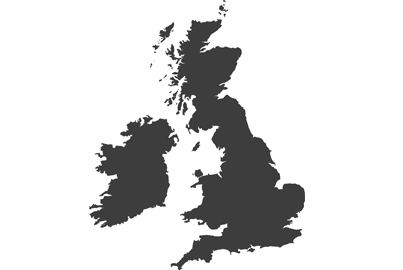5 Easy Steps on How to Wave Hair with Straighteners

It’s fair to say that hair trends change dramatically over time – and that’s what makes them so much fun. Whether you prefer a traditional, formal look or would prefer to take an adventurous risk, there’s a style for everyone to enjoy. In recent times, waving hair has become a popular trend, and this is a wonderful option for anyone who’d like to perfect a relaxed, beachy look that’s suitable for almost any occasion.
Although curling irons can be used to create spiral curls, straighteners are a better choice of hair styling tool for creating soft, flowing waves. Plus, the great news is that it’s not a difficult look to achieve, so if you own hair straighteners, you’re ready to get started on your styling journey.
In this post, we’re going to show you how to get beach wave hair with a straightener in just five easy steps.
Step 1: Preparing Your Hair
The first thing to note is that it’s best to start this process with clean, dry hair. Freshly washed hair tends to hold waves better because it contains less natural oil buildup, which can weigh hair down and make it more difficult to hold a style.
To ensure you’re looking after your hair properly, it’s also worth applying a heat protectant spray at this point, which will add an extra layer of defence against potential heat damage.
Once you’ve got that covered, run a brush through your hair to make sure there are no tangles before you start to style it.

Step 2: Sectioning Your Hair
When we see someone with an incredible hairstyle, it’s natural to wonder how they managed to achieve it. Trying a new style can seem daunting because it’s difficult to know where to start. However, most hairstyles are achieved by working in smaller sections, which makes it a more manageable and less stressful experience.
Therefore, you should now divide your hair into manageable sections. To do this, part your hair down the middle, and then divide each half into three equal sections. You can keep the sections apart by securing them with hair clips. The bonus here is that smaller sections will help you distribute heat evenly through your hair, which will lead to better-defined waves.

Step 3: Creating Your Waves
Here’s where things get a little technical but don’t worry – it’s truly an easy process once you’ve practiced a little. You could also try the following steps with the heat off to get used to the motion.
Start by holding the straightener vertically. Clamp a small section of hair close to the roots and then twist the straightener away from your face.
With the hair still clamped and twisted, it’s now time to create your waves. Continue to clamp while gently gliding the straightener down the hair. As you do this, you should repeatedly alternate the direction you are twisting in (away from the face, then towards the face, then away from the face, and so on) until you reach the tips of the hair you’ve clamped.
By doing this, you will create several flowing waves in your hair. It’s important to note here that, the slower you glide the straightener down your clamped hair, the deeper the waves will be. Of course, don’t do things too slowly – you don’t want to damage your hair with excess heat.
Once you’ve done this, it’s time to clamp down on another section and continue to repeat the process until you’ve covered your entire hair.

Step 4: Setting Your Waves
One of the problems many people face with this kind of style is that they don’t know about setting the hair. If you don’t do this, your waves may not last for as long as you’d hoped.
Start by allowing your hair to cool down for around 10 minutes or so. This is important because it helps with the natural setting of the waves. Once you’ve done that, you can spray your hair with your choice of holding product – for example, hairspray. However, don’t use too much product here because it can make the waves stiff, rather than light and airy.
Step 5: Adding the Finishing Touches
Congratulations – you’ve completed the tricky part of the styling process. It’s now time to add some finishing touches before you leave the house and impress people.
Start by gently running your fingers through your hair to create some natural separation between the waves and add some volume. At this point, you can also add some of your favourite products, such as those designed for frizz control or added shine, but that comes down to preference.
If you’re wondering how to wave short hair with straighteners, it’s the same process. The only difference is that you’ll have smaller sections and therefore fewer waves due to the length.
The final step is to admire your styling skills and to enjoy your incredible waves. Don’t be surprised if you receive a few compliments from those around you. After all, you’ve earned them.

Discover more of our tips and tricks for styling your hair with the rest of our Learn More section here.





